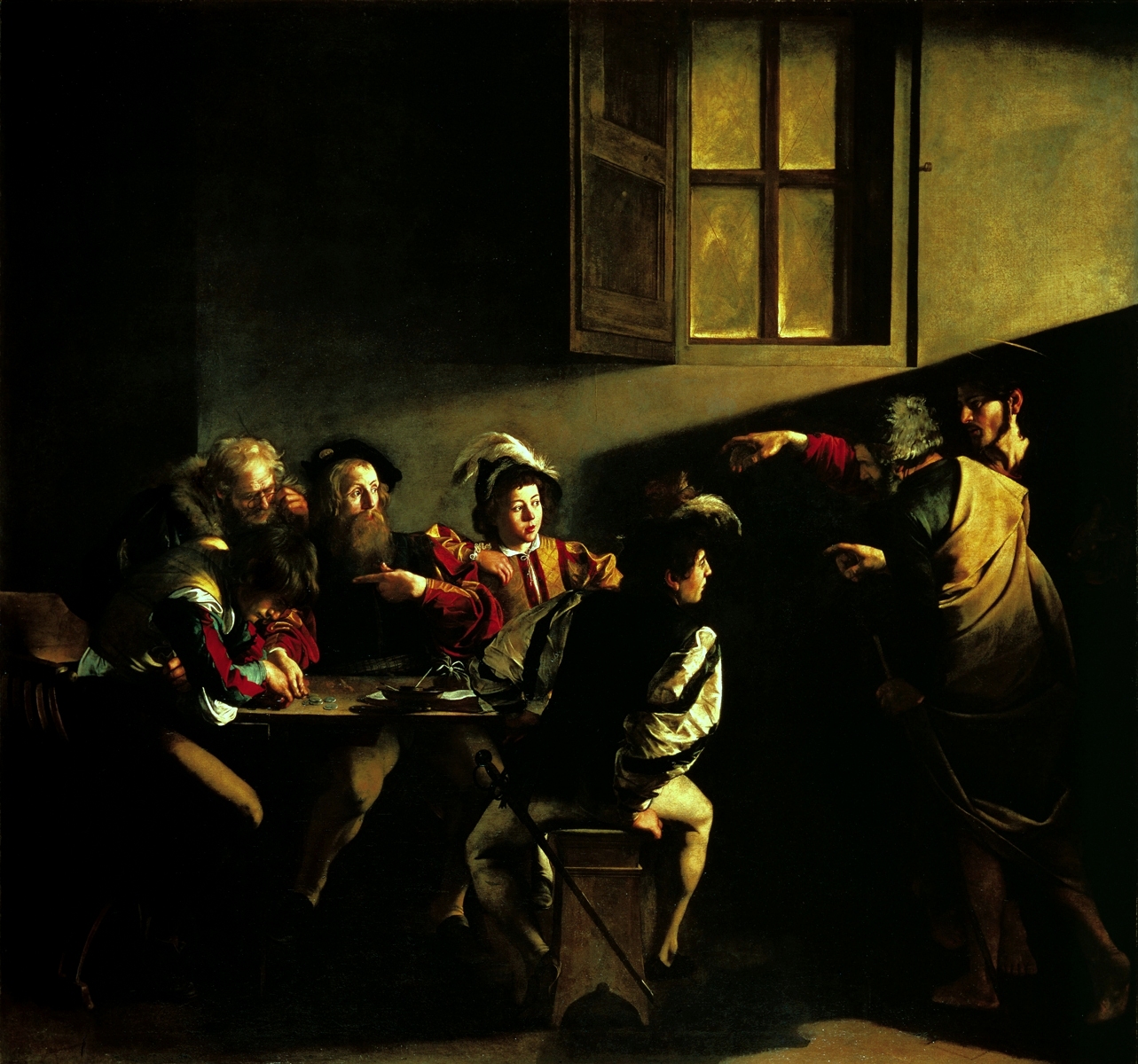First, look at the principle figures in the scene: Christ, St. Matthew, and St. Peter (recognizable in front of Christ by his traditional gold outer garment over a blue-green inner garment).
Christ reaches toward St. Matthew, selecting him. His eyes are wide, his mouth slightly open, his head forward on his body. This illustrates His eager desire (Luke 22:15) to have each of us belong to Him, which desire is the source of every vocation.
His hand is almost precisely copied from Michelangelo's famous Creation of Adam. Christ's hand is pointing in the same direction as the hand of Michelangelo's God the Father. However, Caravaggio does not copy God the Father's energetic fingers; instead, he traces Adam's limp hand. In these details, Caravaggio represents our Lord as divine and descending to men from Heaven; at the same time, he includes Christ's full humanity--he took on all the (unfallen) weakness of His creatures.

It would be remiss to comment on a Caravaggio without speaking about light. The light (illuminating the figures and a little less than half of the wall) is not coming from the window. Rather, it is coming from behind Christ. It reminds me of our recent Mass readings...
The words that I speak to you I do not speak on my own. The Father who dwells in me is doing his works. (Jn 14:10)Finally, notice St. Peter, who might initially seem awkwardly placed. Isn't he blocking Christ? On the contrary, he is placed to represent an often-overlooked aspect of each vocation. The vocation of every Catholic is approved by the Church: for example, consecrated men and women make their vows or receive consecration with the approval of their ordinary; in another example, the vows exchanged by a married couple are dignified in the Sacrament of Matrimony. In The Calling of St. Matthew St. Peter stands as Christ's vicar, not blocking or replacing Him, but making Christ's desires known as he imitates Christ's gesture.

Beautiful analysis! Thank you!
ReplyDeletelovely explanation. Thank you.
ReplyDeleteThanks for reading and commenting, Annie and HermitTalker!
ReplyDelete